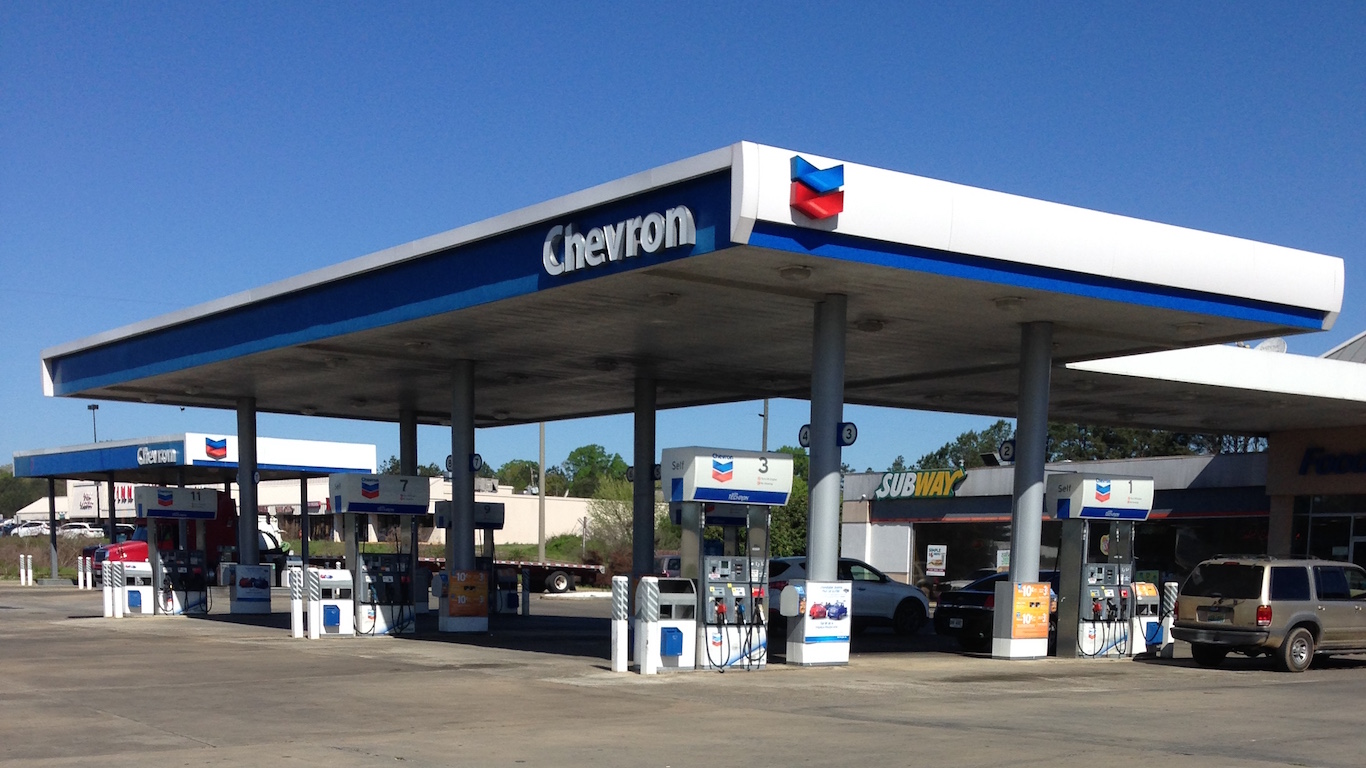
Now that oil prices have fallen well under $30 per barrel, with $20 very possible, even the biggest and boldest of the oil giants have seen their shares gutted. Chevron Corp. (NYSE: CVX) is one of those companies. There has been a lot of speculation that as it looks for every way under the sun to cut operating expenses, the oil and gas giant’s dividend might no longer be so sacred.
Tuesday’s rally was after the company took steps to mitigate the damage that the COVID-19 pandemic is having on the company. Chevron did not offer formal earnings guidance but said that the recent decreases in commodity prices and lower oil demand and geopolitical pressures that are increasing supply all add up to a negative impact on its future financial and operating results. The firm also warned that uncertainty and unpredictability around the impact on its results remain in place.
It was unsurprising to hear that Chevron would suspend its stock buyback efforts along with flat oil production targets, but it was very surprising to hear that Chevron effectively has promised to protect its dividend. Chevron did announce that it was cutting 2020 spending by 20%, down to about $16 billion. Its biggest cut will be seen in what had been the prized Permian Basin.
The company’s dividend is to be supported by its balance sheet more than by strong earnings. Chevron indicated that its cash capital and exploratory expenditures are expected to decrease by $3.3 billion to $10.5 billion in 2020, down to about $7 billion in the second half of 2020, for an annual run rate that is 30% lower than the budget that was announced at the end of 2019.
What is amazing about the Chevron dividend pledge is that it now has a yield of 8.4%. Investors who bought at the close of trading on Monday would be seeing a 9.5% yield.
Chevron Chief Financial Officer Pierre Breber noted that its financial priorities remain high. He also addressed the dividend issue head on: “Our focus is on protecting the dividend, prioritizing capital that drives long-term value, and supporting the balance sheet.”
Chevron had repurchased about $1.7 5 billion in stock during the first quarter of 2020, but it has suspended the larger $5 billion annual share repurchase program. The company also received $500 million in the first quarter, now that it has completed the sale of its interest in the Malampaya field in the Philippines. In April, Chevron expects to close on its sale of its upstream interests in Azerbaijan and its interest in a related pipeline. The targeted run-rate operating costs are expected to be more than $1 billion by the end of this year.
As for specifics in those $4 billion total capital spending cuts, $2 billion will come from in upstream unconventionals that are primarily in the Permian Basin. Another $700 million in cuts will come from Chevron’s upstream projects and exploration, and two other cuts outlined were $500 million from its upstream base business (U.S. and international assets) and $800 million from its downstream and chemicals and other operations.
Chevron Chairman and CEO Michael Wirth said:
With an industry leading balance sheet and a flexible capital program, we believe Chevron is resilient and positioned to withstand this challenging environment. Given the decline in commodity prices, we are taking actions expected to preserve cash, support our balance sheet strength, lower short-term production, and preserve long-term value.
Investors who are betting that Chevron will keep paying that dividend should keep some things in mind. It might not be fair yet to forecast that Chevron will have to address shareholders with a lower dividend in the future, mostly because the future hasn’t happened yet. Yet, if oil prices do not rebound sharply, then even a strong balance sheet like Chevron’s can only last so long paying out such a high dividend when almost every other oil major is having to look at every cost it has on the books.
When oil prices collapse, and with continual pressure from the ESG movement, it can become difficult to keep selling assets at reasonable prices, and it can become rather expensive to raise capital via debt and credit facilities. Chevron already had $23.7 billion in long-term debt on its books at the end of 2019, along with another $13.7 billion in deferred tax liabilities. This is a time when infrastructure assets also may not be worth what the books show in a real-world sale situation, and oil being close to $23.50 per barrel will yield a far lower all-in value for the company’s reserves that the $60 oil prices at the start of 2020.
It is uncommon to see double-digit gains in a single day on one of the two largest domestic oil stocks. Chevron was trading up 13.5% at $61.50 on Tuesday, and its 52-week range is now $51.60 to $127.34.
100 Million Americans Are Missing This Crucial Retirement Tool
The thought of burdening your family with a financial disaster is most Americans’ nightmare. However, recent studies show that over 100 million Americans still don’t have proper life insurance in the event they pass away.
Life insurance can bring peace of mind – ensuring your loved ones are safeguarded against unforeseen expenses and debts. With premiums often lower than expected and a variety of plans tailored to different life stages and health conditions, securing a policy is more accessible than ever.
A quick, no-obligation quote can provide valuable insight into what’s available and what might best suit your family’s needs. Life insurance is a simple step you can take today to help secure peace of mind for your loved ones tomorrow.
Click here to learn how to get a quote in just a few minutes.
Thank you for reading! Have some feedback for us?
Contact the 24/7 Wall St. editorial team.




